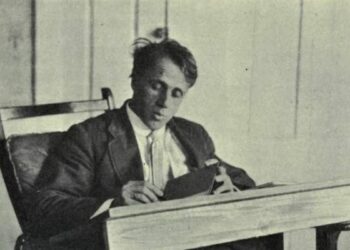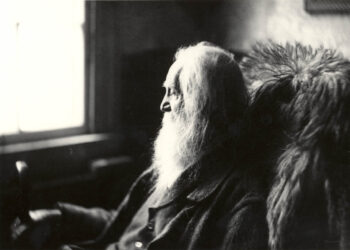Introduction
Summary of Caged Bird By Maya Angelou Caged Bird is a powerful poem by Maya Angelou, first published in her 1983 collection I Shall Not Be Moved. The poem contrasts the experiences of a caged bird, which symbolizes oppression and confinement, with those of a free bird, representing liberty and opportunity. Through vivid imagery and poignant language, Angelou explores themes of freedom, resilience, and the struggle against injustice. The poem serves as a profound commentary on the human condition, particularly in the context of the African American experience and the broader fight for civil rights.Summary of Caged Bird By Maya Angelou
Summary of the Poem
Structure and Form
Caged Bird consists of six stanzas, alternating between the experiences of the caged bird and the free bird. The poem employs a consistent rhyme scheme and rhythmic cadence that enhance its lyrical quality. Angelou’s use of repetition emphasizes the contrasting states of freedom and confinement, reinforcing the emotional weight of the themes she explores.Summary of Caged Bird By Maya Angelou
READ MORE
Themes
The poem delves into several significant themes:
- Freedom vs. Oppression: The caged bird represents those who are oppressed and denied their freedom, while the free bird symbolizes those who enjoy liberty and the pursuit of happiness. This duality highlights the stark contrast between different experiences of life.
- Hope and Resilience: Despite its confinement, the caged bird still sings, embodying a sense of hope and resilience. This act of singing serves as a powerful metaphor for the indomitable spirit of those who face adversity.
- The Human Spirit: Angelou emphasizes the strength of the human spirit in the face of oppression. The poem suggests that, even when faced with confinement, individuals can find ways to express their yearning for freedom and justice.Summary of Caged Bird By Maya Angelou

Summary of Caged Bird By Maya Angelou
Summary of the Poem
Stanza 1: The Free Bird
The poem opens with a description of the free bird, which embodies the essence of freedom:
“The free bird leaps on the back of the wind / And floats downstream till the current ends.”
In these opening lines, Angelou evokes a sense of joy and liberation. The imagery of the free bird “leaping” and “floating” suggests a carefree existence, unencumbered by constraints. The bird’s ability to soar and navigate the world symbolizes the opportunities available to those who live without oppression. This portrayal of freedom is further emphasized by the phrase “till the current ends,” suggesting an infinite journey filled with possibilities.Summary of Caged Bird By Maya Angelou
Stanza 2: The Caged Bird
In stark contrast, the poem shifts focus to the caged bird, highlighting its suffering and confinement:
“But a caged bird stands on the grave of dreams / His shadow shouts on a nightmare scream.”
This line captures the despair and hopelessness of the caged bird’s existence. The metaphor of standing on “the grave of dreams” conveys the idea that the bird’s potential and aspirations have been extinguished by its captivity. The image of the shadow “shouting” a “nightmare scream” evokes a sense of anguish, illustrating the emotional turmoil faced by those who are oppressed. The caged bird’s plight becomes a powerful symbol of the struggles faced by individuals who are denied their rights and freedoms.
Stanza 3: The Caged Bird’s Song
The caged bird’s song becomes a central motif in the poem, representing both despair and hope:
“The caged bird sings / With a fearful trill / Of things unknown / But longed for still.”
Angelou’s use of the word “sings” introduces a glimmer of resilience within the caged bird. Despite its confinement, the bird continues to express itself through song, which serves as a powerful metaphor for the human spirit’s unyielding desire for freedom. The phrase “with a fearful trill” suggests that the song is tinged with fear and uncertainty, reflecting the bird’s awareness of its captivity while simultaneously yearning for liberation. The caged bird longs for “things unknown,” symbolizing the hope for a better future and the possibility of escaping its constraints.Summary of Caged Bird By Maya Angelou
Stanza 4: The Free Bird’s Perspective
The poem returns to the perspective of the free bird, reinforcing the contrasts established earlier:
“The free bird thinks of another breeze / And the trade winds soft through the sighing trees.”
Here, the free bird’s thoughts drift towards new possibilities, representing the limitless opportunities available to those who are free. The imagery of “trade winds” and “sighing trees” evokes a sense of tranquility and comfort, further emphasizing the peaceful existence enjoyed by the free bird. This stanza illustrates the stark contrast between the experiences of freedom and confinement, deepening the emotional impact of the poem.
Stanza 5: The Caged Bird’s Yearning
As the poem progresses, the caged bird’s yearning for freedom becomes more pronounced:
“The caged bird sings / With a fearful trill / Of things unknown / But longed for still.”
Summary of Caged Bird By Maya Angelou The repetition of this line serves to reinforce the significance of the caged bird’s song as a symbol of hope. Angelou emphasizes that, even in the face of despair, the caged bird continues to dream of freedom and a life beyond its confines. The song becomes a testament to the enduring spirit of those who resist oppression, reflecting their unwavering desire for liberation.
Stanza 6: Conclusion and Reflection
The poem concludes by reiterating the contrast between the caged bird and the free bird, bringing the themes of oppression and resilience full circle. The final lines evoke a sense of urgency and longing, leaving readers with a powerful message about the need for freedom and the struggles faced by those who are confined.Summary of Caged Bird By Maya Angelou
READ MORE
The Song of the Caged Bird
One of the most significant aspects of the poem is the caged bird’s song:
“The caged bird sings / With a fearful trill / Of things unknown / But longed for still.”
Here, Angelou emphasizes the paradox of the caged bird’s existence. Despite its captivity, the bird continues to sing, expressing a deep longing for freedom and the unknown. This act of singing symbolizes the enduring hope and resilience of the human spirit, even in the face of overwhelming adversity.Summary of Caged Bird By Maya Angelou

Conclusion
Summary of Caged Bird By Maya Angelou Maya Angelou’s Caged Bird is a poignant and powerful poem that explores themes of freedom, oppression, and the resilience of the human spirit. Through the contrasting imagery of the caged bird and the free bird, Angelou invites readers to reflect on the struggles faced by marginalized individuals, particularly within the context of the African American experience. The poem serves as a timeless reminder of the enduring desire for freedom and the strength of the human spirit in the face of adversity.
The lyrical quality of Angelou’s writing, combined with her evocative use of imagery and symbolism, makes Caged Bird a profound exploration of social injustice and the quest for liberation. The poem resonates with readers on multiple levels, encouraging them to empathize with the struggles of others and to recognize the importance of fighting against oppressionSummary of Caged Bird By Maya Angelou
READ MORE
FAQ
1. What is the main theme of Caged Bird?
The main theme of Caged Bird is the contrast between freedom and oppression. The poem explores the experiences of individuals who are confined and oppressed, symbolized by the caged bird, and those who enjoy liberty, represented by the free bird.
2. What does the caged bird symbolize in the poem?
The caged bird symbolizes oppression, confinement, and the loss of dreams and potential. It represents individuals who are denied their freedom and face systemic injustices, particularly in the context of the African American experience.
3. How does the free bird contrast with the caged bird?
The free bird represents liberty, opportunity, and the joy of life. In contrast to the caged bird, the free bird experiences the beauty of nature and the freedom to pursue its desires, highlighting the stark differences in their experiences.Summary of Caged Bird By Maya Angelou
4. What does the act of singing signify for the caged bird?
The act of singing signifies resilience, hope, and the enduring spirit of those who are oppressed. Despite its confinement, the caged bird expresses its longing for freedom and the unknown through its song, symbolizing the human desire for liberation.
5. How does Maya Angelou use imagery in Caged Bird?
Angelou employs vivid imagery throughout the poem to evoke emotions and paint a stark contrast between the experiences of the caged bird and the free bird. The imagery helps convey the themes of oppression, hope, and the indomitable human spirit.
6. What is the significance of the poem’s structure?
The poem’s alternating stanzas between the caged bird and the free bird create a rhythmic contrast that emphasizes the differences in their experiences. The consistent rhyme scheme and repetition enhance the lyrical quality of the poem, making its themes more impactful.Summary of Caged Bird By Maya Angelou
7. What is the overall message of Caged Bird?
The overall message of Caged Bird is a powerful commentary on the struggle for freedom and the resilience of the human spirit in the face of oppression. It underscores the importance of hope and the desire for justice, resonating with the experiences of marginalized individuals.
8. How does Caged Bird relate to Maya Angelou’s own life?
Maya Angelou’s life experiences, particularly as an African American woman facing racism and oppression, deeply inform the themes of Caged Bird. The poem reflects her personal struggles and the broader fight for civil rights, making it a poignant expression of her journey.Summary of Caged Bird By Maya Angelou
READ MORE

















